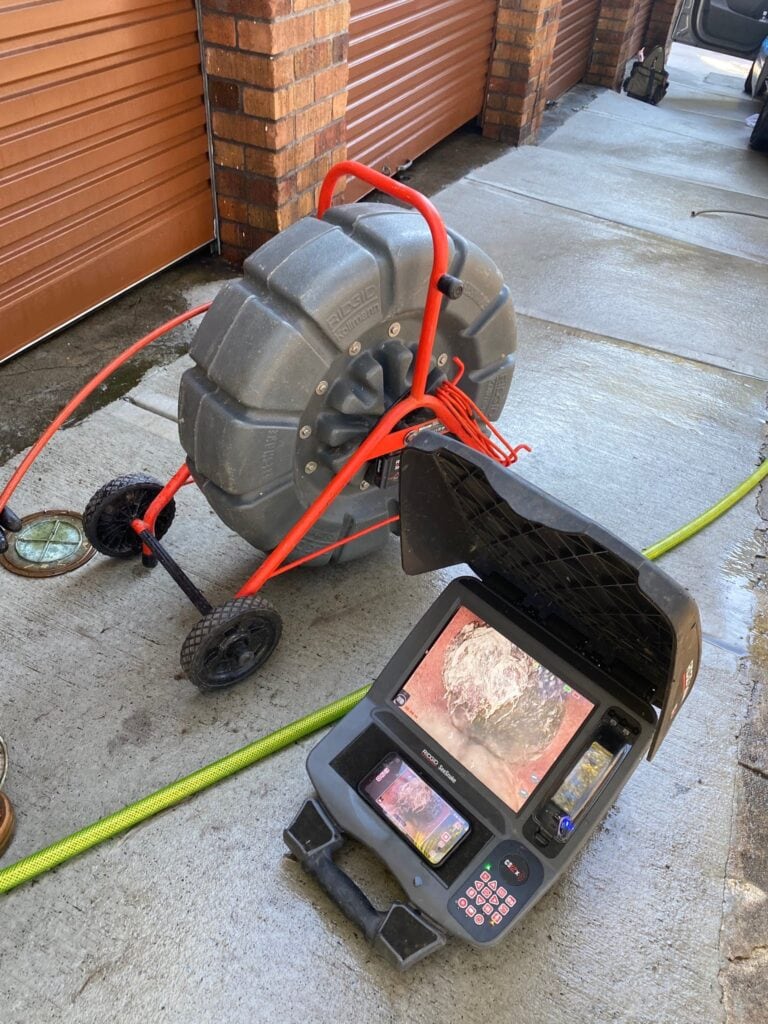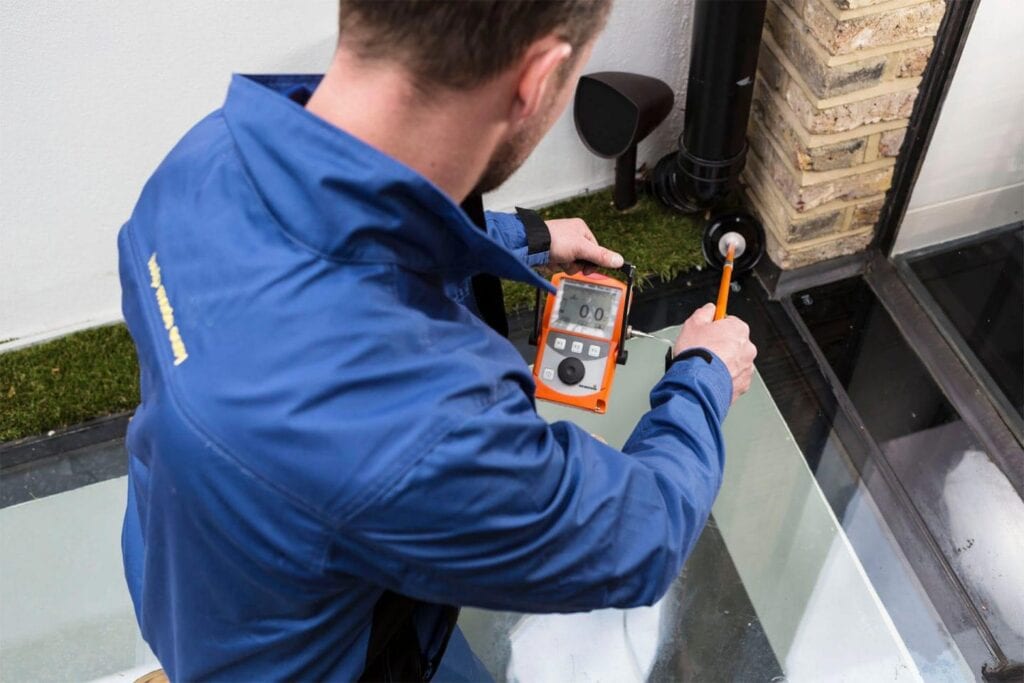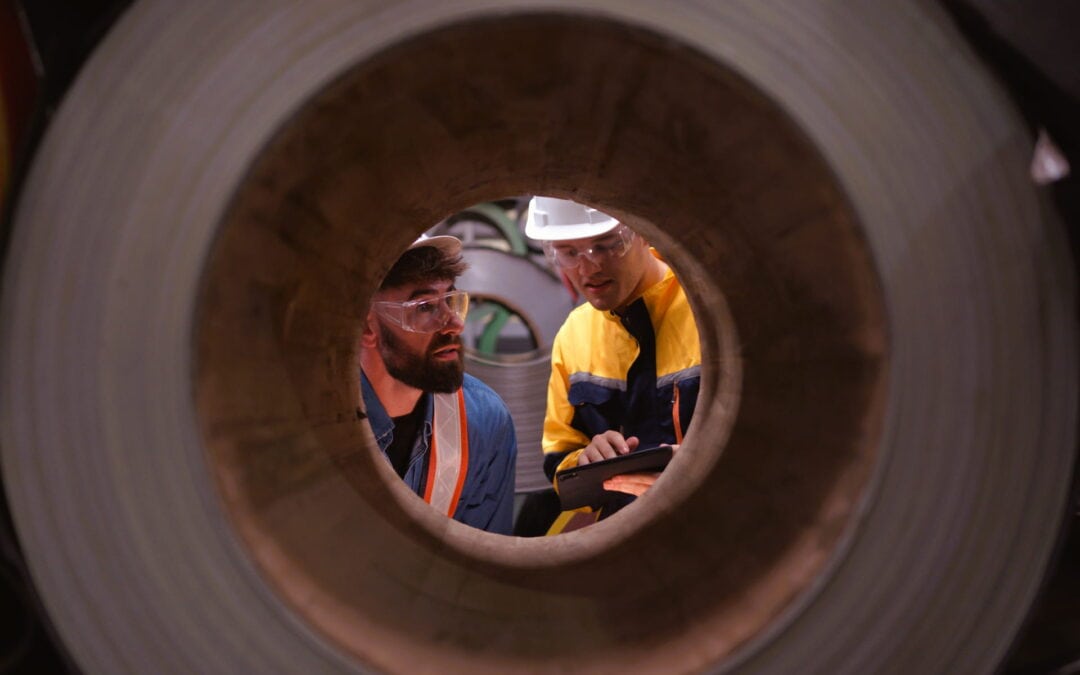Plumbing issues can sneak up on anyone, often hidden deep within the pipes of any home or business. What are video inspections for plumbing, you ask? This method allows professionals to peek into the vast, unseen networks of pipes and pinpoint issues accurately and quickly. Throughout this discussion, we’ll explore what video inspections involve and why they’re transforming how plumbers approach maintenance and repairs.
Understanding Video Inspection
Video inspection in plumbing utilizes advanced camera technology to inspect sewer lines and pipes’ interior conditions that are not otherwise accessible. A flexible rod with a high-definition video camera on its tip is inserted into the pipe, providing real-time feedback to the technician on any abnormalities found within. For example, a plumber might use this technology to identify blockages or damage in a pipe at a commercial facility, avoiding the need for extensive excavation and providing a precise diagnosis on the spot.
- Technology Used: High-resolution cameras, flexible insertion rods, and real-time feedback monitors.
- Visibility: Allows for inspection of underground, encased, or hard-to-reach pipes.
- Accuracy: High level of detail helps in identifying all types of plumbing issues.
Benefits of Video Inspections
The advantages of video plumbing inspections are significant compared to traditional methods that often require guesswork and can be quite invasive. This technology not only saves time but also ensures that the diagnosis is accurate, minimizing the need for repeated efforts and extensive physical labor. The detailed view provided by the camera helps plumbers:
- Efficiency: Rapid identification of issues reduces labor and time.
- Cost-effective: Less invasive, meaning less labor and repair costs over time.
- Preventive Maintenance: Early detection of potential problems prevents major repairs.
How Video Inspections Work
The process of conducting a video inspection might seem complex, but it is remarkably efficient. The plumber inserts a rod equipped with a camera into the pipe, maneuvering it to get a comprehensive view of the pipe’s interior. This can identify everything from root infiltration to unnoticed leaks, offering a clear picture without digging up your property. With this approach, problems can be addressed before they escalate into major concerns.
- Process Steps: Insertion, maneuvering, and real-time problem identification.
- Capabilities: Detects leaks, blockages, and wear in pipes.
- Outcome: Detailed insights allow for targeted repairs.

Common Issues Uncovered by Video Inspections
Through video inspections, plumbers can uncover a variety of issues that might go unnoticed in standard checks. These include root intrusions, which can severely damage pipes, or old pipes that are corroded and posing a risk of breaking. Here are common problems identified:
- Root Intrusion: Tree roots invading and blocking water flow.
- Pipe Corrosion: Old or damaged pipes that need replacement or repair.
- Blockages: From household waste, toiletries, or cooking grease build-up.
When to Opt for Video Inspections
Choosing when to utilize video inspection services can save homeowners and businesses considerable time and money. It’s especially recommended before purchasing a new home or after a severe storm that could have shifted the ground and affected underground piping. Other scenarios include:
- Pre-Purchase Inspections: Ensuring no hidden plumbing issues.
- Post-Storm Assessments: Checking for damage from soil shifts.
- Routine Maintenance: Preventing major future issues with regular checks.
Choosing the Right Plumbing Service for Video Inspections
When it comes to selecting a plumbing service for video inspections, it’s vital to choose professionals who are skilled and well-equipped. Look for services that offer up-to-date technology and have a solid track record of diagnosing and resolving issues efficiently. Here’s what to consider:
- Certification and Licensing: Ensures professional standards.
- Modern Equipment: Indicates service quality and technological adoption.
- Experience and Reputation: Reflects reliability and skill in handling complex issues.
Cost of Video Inspections
The cost of video inspections can vary depending on several factors including location, pipe accessibility, and the extent of the inspection required. Typically, homeowners might expect the cost to range from moderate to high, but the investment is often worth it given the potential savings on unneeded repairs.
- Average Costs: Varies by region and scope.
- Long-term Savings: Prevents costly emergency repairs.
- Value: Offers thorough diagnostics compared to traditional methods.
Future of Plumbing Inspections
As technology progresses, the future of plumbing inspections will likely become even more sophisticated. Innovations might include more advanced cameras with better resolution and capabilities such as 3D mapping of plumbing systems. These advancements could further streamline diagnostics and repairs, making plumbing systems more reliable than ever before.
- Technological Advancements: Enhanced camera technologies.
- Integration: More comprehensive diagnostic systems.
- Reliability: Increased accuracy and decreased disruption.

Analyzing the Benefits and Drawbacks
Video inspections for plumbing are a significant advancement in how plumbing issues are diagnosed and treated. They offer a non-invasive method to visually inspect pipes and sewer lines, allowing for precise identification of problems and tailored solutions. While the upfront cost might be higher than traditional methods, the accuracy, time savings, and prevention of future issues provide substantial long-term benefits.
Key Takeaways for Video Plumbing Inspections
- Video inspections provide a precise and efficient method for diagnosing plumbing issues.
- They reduce the need for invasive procedures, thus saving time and money.
- Regular video inspections can prevent significant future plumbing problems.
Frequently Asked Questions
1. How long does a video inspection take?
- Typically, a video inspection can be completed within one to two hours, depending on the complexity of the plumbing system.
2. Can video inspections detect all types of plumbing issues?
- Yes, they can identify a wide range of problems, including blockages, leaks, and structural damages.
3. Are video inspections safe for all types of pipes?
- Absolutely, video inspections are safe for all types of plumbing systems and materials.
4. What should I do if a video inspection uncovers a major issue?
- It’s advisable to consult with a professional plumber to discuss repair or replacement options.
5. How often should I schedule video inspections?
- For most homes, scheduling a video inspection every two to three years is sufficient, but it might vary based on the age and condition of your plumbing system.

